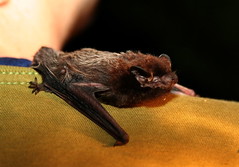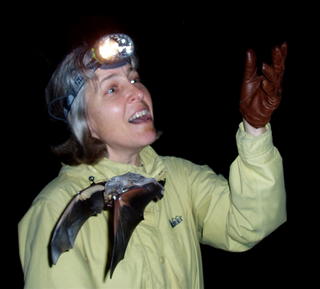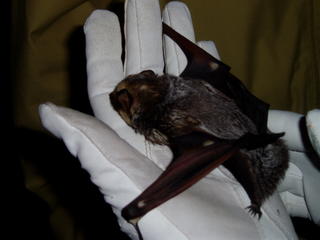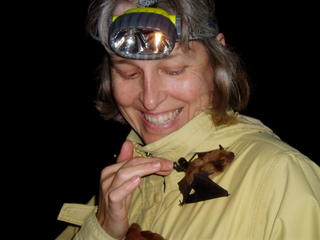I get this question a lot. It's probably easier to ask than the one you
really want to ask, which is: what are you going to live on after you quit your job?
There are lots of answers to the first question.
First, bats are just plain cool. Mammals that fly!
Plus, the fact that they defy our senses -- we can't see them, or hear them -- that's also pretty cool. And they spend a lot of time upside-down. Hard to imagine how they experience this world we share.
Also, we really don't know much about them at all. So whatever I decide to study will be new and probably useful. We know so little about them that we can't even prove if they should be classified as endangered or not.
There are over 1,000 species of bats. That's more than any other kind of mammal, save rodents. And incidentally, they are more like primates (that's us) than rodents. There bats that eat insects, and fruit, and flowers and nectar, and lizards and frogs. There are bats that eat other bats. There are bats that catch fish, by echolocating the ripples they make on the surface of the water. And of course there are bats that drink blood, though they make up only two of the 1,000 species.
Another reason to study bats is that you get to play with cool gear, like ultrasound recorders and infrared cameras.
Then there's the cute factor, once you see one of them live and up close. Trust me, they are adorable. Even after they bite you.





